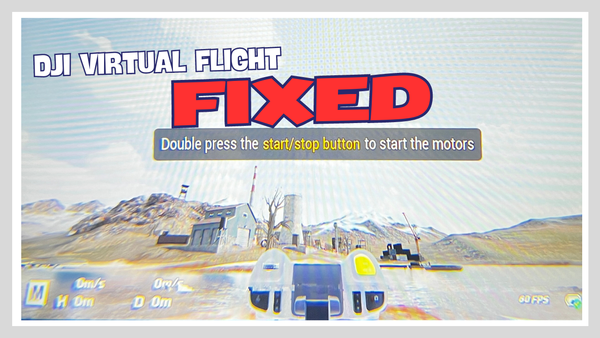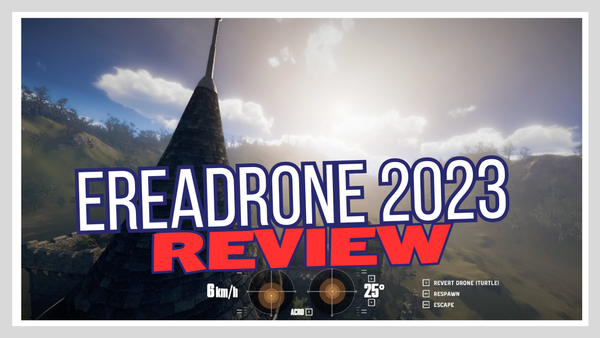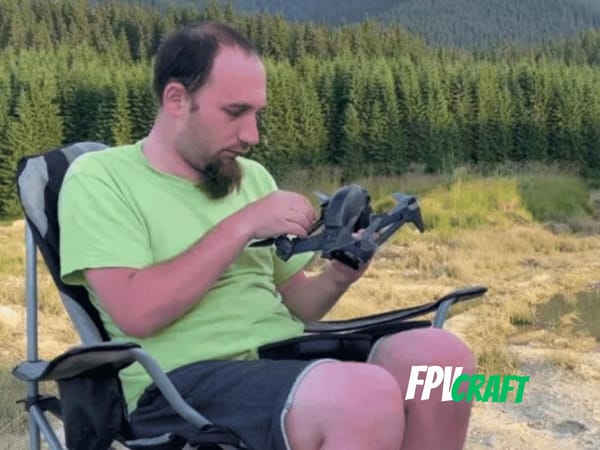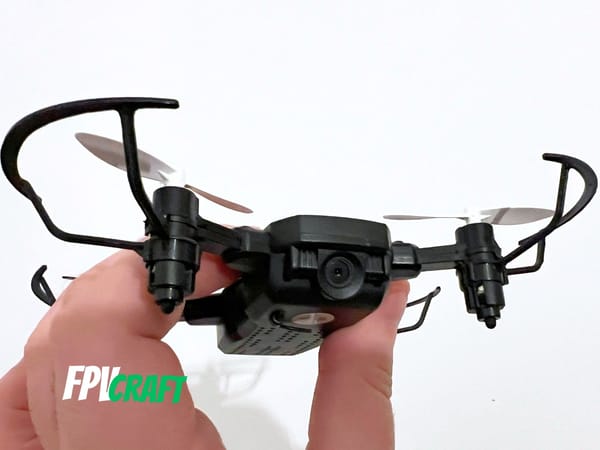Tips to Consider Before Your First DJI FPV Manual Flight
DJI FPV is a powerful FPV drone, incredibly fast and dangerous at the same time. So, we have a few tips to consider before your first flight in manual mode.
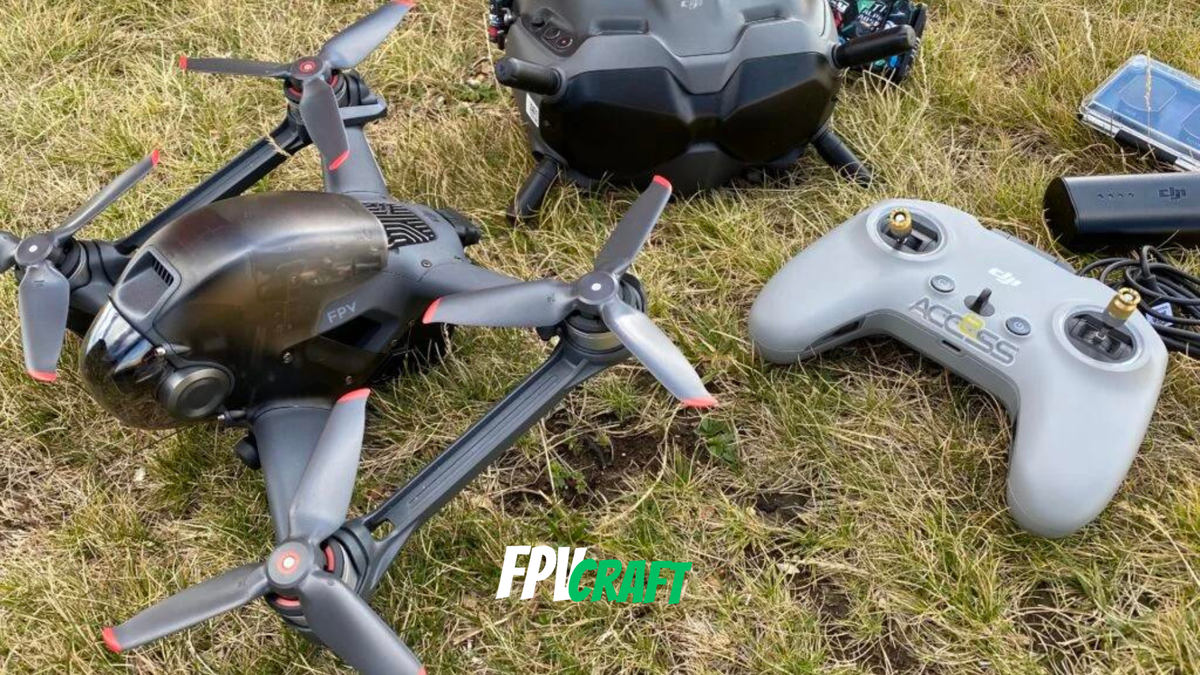
If you got your DJI FPV drone, you are in for a treat. The FPV experience is immersive, and the drone capabilities are limitless, with some stunning performance and venture into a completely different level of flying drones.
But flying a DJI FPV drone can be quite dangerous if you have no experience at all in flying FPV drones.
The controls are different, including the drone input reaction, speed, sensitivity, etc. Therefore, in this article, I want to share a few fundamental tips to consider before your first DJI FPV manual flight.
Take off for the first time in an open field with no people or buildings around.
Location is important. Not only that, you must be in an open space far away from buildings and population to avoid any interference on your first flight.
Remember, it is your first flight, and you try out your brand-new shiny FPV drone. You don’t want to make mistakes.
This is for your drone and people’s safety. I know because I’ve been through this.
Even in an open field with a 30-degree angle, my drone just launched into “hyperspace”! That quick it is, and the control input may feel different from training in your simulator.
It is best practice not only the first time you fly your DJI FPV drone but at least 10-15 times to fly it in open spaces away from any sign of civilization.
Practice in FPV Simulators
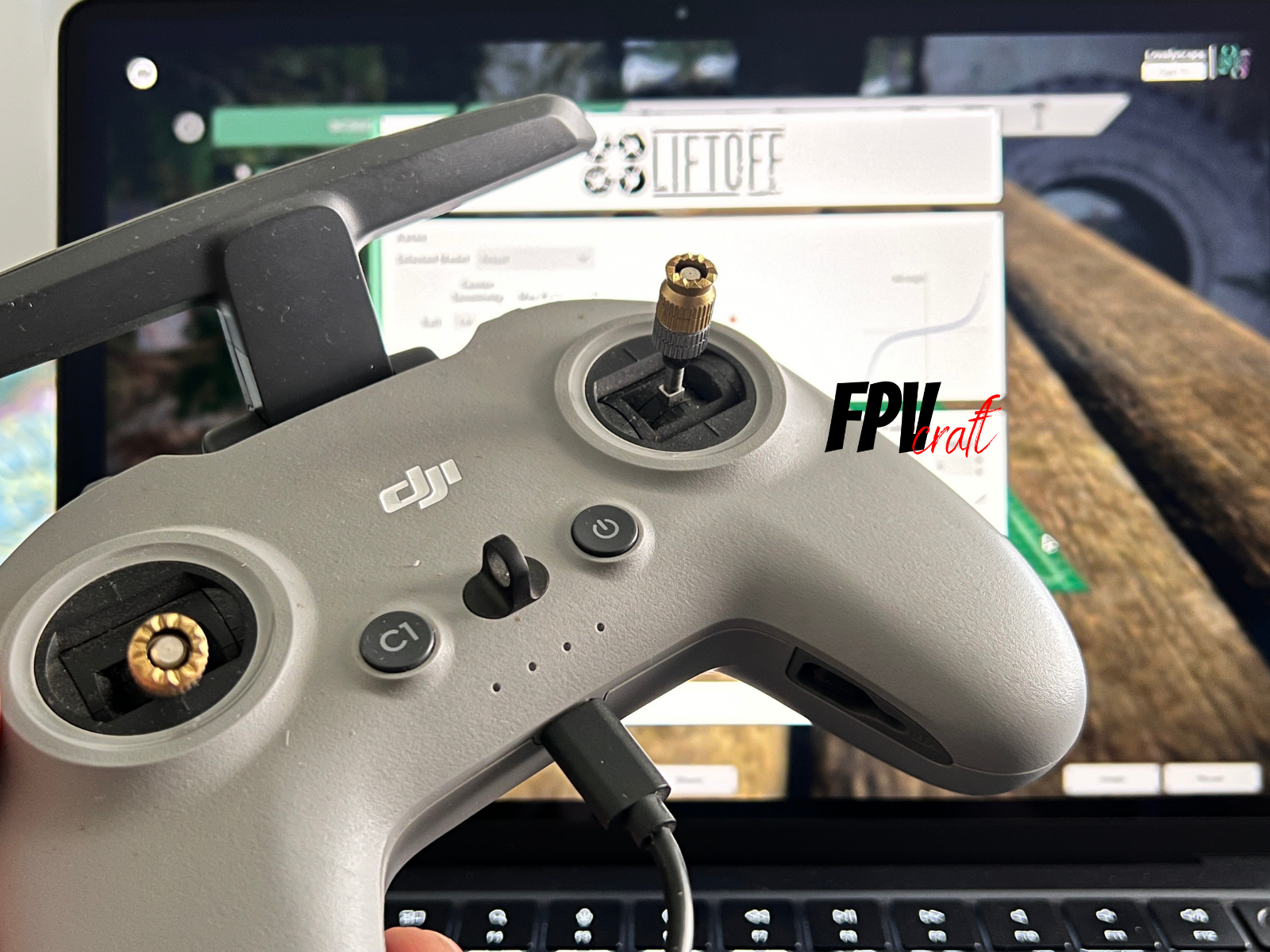
This is the bread and butter of flying the DJI FPV drone and any FPV drone in general. No person takes the controller in hand and flies the DJI FPV drone (or any FPV drone) well without experience or training in simulators.
Training in a simulator LONG before your first flight is crucial to ensure you understand the control of your drone. Once you learn this skill, like driving, you can fly the DJI FPV drone and any FPV drone.
The skill from the simulator to real life is HIGHLY transferable; therefore, everything you do in the sim is risk-free and will help you a lot when you are about to take off for the first time in manual mode.
There are a few simulators out there. The main one I use is “Liftoff,” available on multiple devices. You can connect your DJI FPV controller to your PC and train in the sim as much as you want risk-free.
» Related: What is the Best Liftoff Simulator Camera Angle to Learn FPV
As a tip, I had over 100 hours of training in the Liftoff simulator and 10 hours in DJI virtual flight before my first manual flight with the DJI FPV drone.
The second simulator I use is the DJI Virtual Flight, which is available on your phone. The advantage of this sim is that the DJI makes it, and you can connect your controller and goggles to your phone and play the simulator, enjoying the FPV experience with the goggles on.
Not only that, but you will also get used (if you haven’t used any FPV goggles before) to using the goggles so that you will be prepared for immersive motion beforehand.
Therefore, once more, it is CRUCIAL for you to have some hours put in a simulator before you even consider taking your DJI FPV drone outside for a manual flight (if you are a newbie).
Adjust your DJI FPV drone settings accordingly (and update everything)
The factory settings for your DJI FPV drone, controller, and goggles are slightly off the edge. You don’t want to use those settings at all.
The control sticks will be supersensible, with a high risk of you losing control of the drone, the goggles image will obstruct seeing more of the horizontal side of the screen, and the basic settings of your fpv drone have to be adjusted for a smoother and safer experience.
There are many online tutorials (YouTube) on what settings to use. This will always depend on your flight considerations: I fly my DJI FPV drone for cinematic only; therefore, my settings are set explicitly for a cinematic FPV experience. (I will follow this in another post).
But to punch the basics, consider the following adjustments:
- Decrease your controller stick ratio – they are very sensitive and pretty dangerous to fly like this in the beginning.
- Remove the spring tension of your throttle stick (there should be a guide on your guidebook you get with your drone on how to do it)
- Make sure you set the correct altitude in goggles, and as a failsafe, set RTH – RETURN TO HOME.
- Set your image ratio from 16:9 to 4:3 on your DJI FPV goggles – with 4:3, you will see more of the sky and ground than with the 16:9, which is crucial for a safer flight.
- Set your FPV camera angle to a lower degree on your first flight so that you can fly FPV at slower speeds in the beginning (under 20 degrees)
» Related: Best Gain & Expo Rates for DJI FPV Drone
Have a finger always ready to press the “emergency stop” button
The emergency stop is a feature available only on the DJI FPV drone. This is available as a standalone button on your controller.
If you ever feel that you lost control of the drone, the emergency stop will literally stop your drone in mid-air and will hover by itself, and the drone will go back from manual mode into normal mode, awaiting your input.
This will save your drone from crashing if you can quickly react in emergencies. Moreover, I typically use the button and combine it with the return home to bring my drone safely back most of the time.
ALWAYS use the RTH (return to home) function when landing.
As mentioned above, in combination with the emergency brake button, the return to home will bring your drone safely back like any DJI drone, going up to your set altitude and returning + landing the drone safely.
I do have to mention: one of the most complicated things while flying any FPV drone is landing. I crashed my drone once while attempting to land manually – it is pretty tricky, and as a beginner, you will mostly fail to do it so.
Therefore, the return to home will not only bring the drone back but also land it for you.
Moreover, if you ever happen to lose telemetry (signal) to your drone, the RTH function will kick in and will bring your drone safely back, as long as you have set it up from your failsafe feature in the goggles menu.
Also Read: 27 FPV Tips to Know Before Flying FPV Drones
If you try any ACRO freestyle, try it at a higher altitude
If you want to pump some adrenaline, for sure you will love to do some tricks with your DJI FPV drone, from rolls to flips, dives, etc. – for any of those, in the beginning, I would strongly recommend you to perform them at a higher altitude to avoid crashing your drone.
Have your first take-off and flight in normal mode
I can’t say this enough: if this is your first time flying an FPV drone, take off in normal mode. Yes, the DJI FPV drone will also have on top of manual mode, sport mode, and normal mode.
Before your first manual flight, you need to get used to the goggles and the drone controller. This is the advantage of the DJI FPV drone – you can swap modes at any time.
Also, you can enjoy the experience of flying a drone with the FPV goggles on (in normal mode) with lower risks.
Make sure you have all your batteries charged before a flight.
Ensure all your batteries are charged before each flight, including the goggles and controller. It is easy to forget about one battery level, as you may have to power three devices: Your drone, the DJI FPV goggles, and the controller.
Each battery discharges at a different rate. For instance, the drone will last for 12-20 minutes in the air, and the goggles may last 40 min – 1 hour 30 min (DJI mentions 110 minutes, but for safety reasons, don’t fly with goggle batteries under 50%) and the remote controller battery may last for hours.
» Related: How to protect your DJI FPV batteries
In terms of batteries, make sure you have your goggles battery either strapped somewhere safe or in your pocket, and the cable is not in your way.
The worst thing that would happen is for you to trip the DJI goggles battery wire and disconnect it mid-flight.
Just to be aware, if you don’t fly your DJI FPV drone for a while, the batteries are self-discharging to about 50-70% in order to extend the battery life.
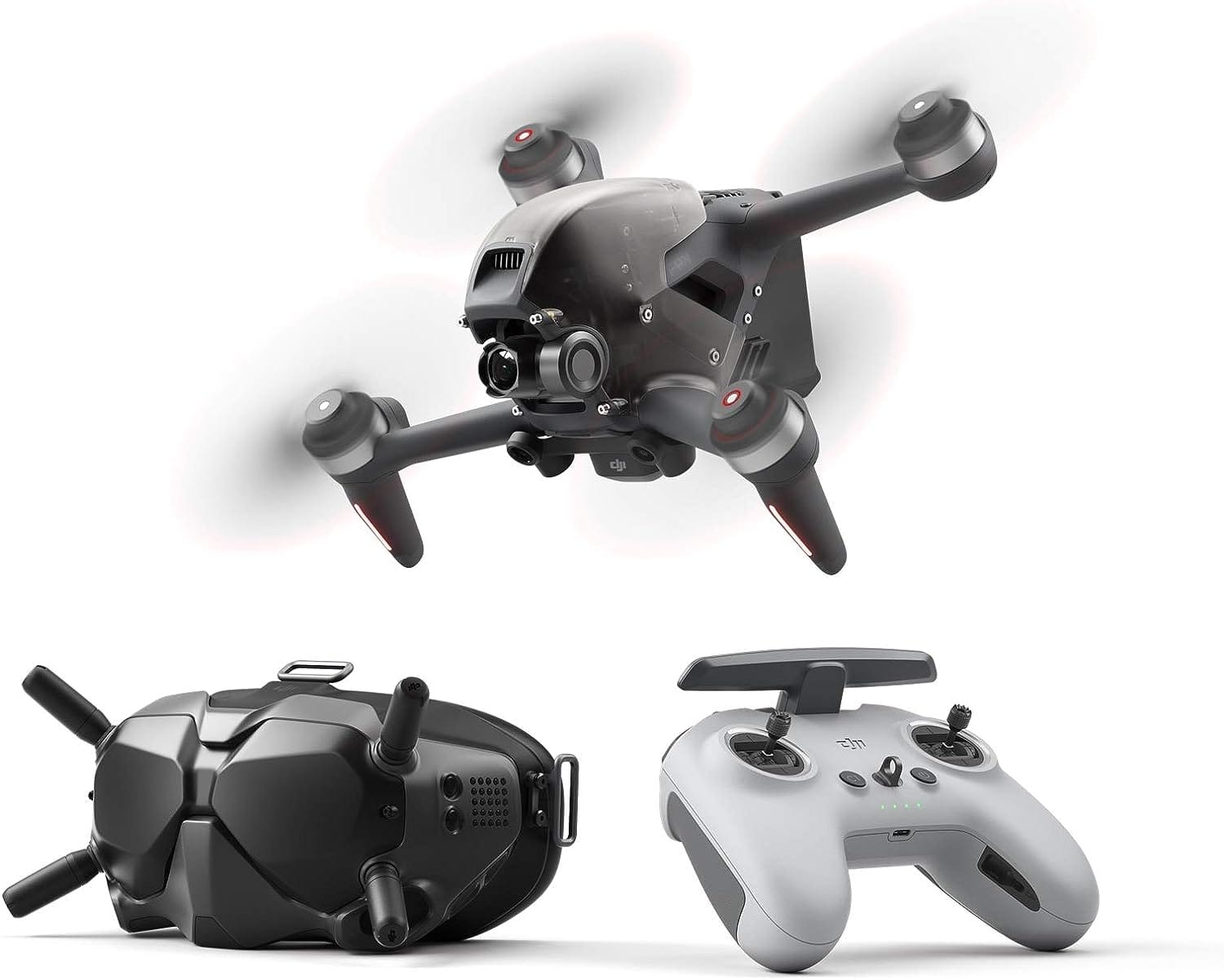
DJI FPV Drone
- IMMERSIVE FLIGHT EXPERIENCE
- 4K/60FPS VIDEO
- BRAND-NEW S MODE
- ADVANCED SAFETY FEATURES
- OCUSYNC 3.0 TRANSMISSION SYSTEM
This is an affiliate link. We earn a commission if you make a purchase, at no additional cost to you.
Be ready for a good cry if you crash your drone.
Just to remind you, the moment you take off in manual mode, you have no sensors active at all, from obstacle avoidance to maintaining an altitude level. Everything is disabled.
Is DJI FPV a Good Drone for an FPV Beginner?
Therefore, to pinpoint my small crash, you need to be ready for it in order to avoid any disappointments. To avoid it as much as possible, for the first flights, always use the RTH function for landing, fly at a higher altitude, and be ready to use the emergency stop button at any time.
Also, it would be good to have backup propellers, just in case. You should have a backup if you order the fly more combo (not sure about the non-combo version).
Like any drone in any mode, ensure it’s safe to take off from your location.
Follow the drone laws and guidelines from the country you are in – e.g. don’t fly it near an airport or with people around; also, legally, in some countries, flying an FPV drone will require you to have a second person called “spotter” as you won’t have direct sight to your drone once you put the goggles on.
Flying an FPV drone, in general, is more dangerous than a standard drone, in particular, in the beginning.
For your safety and others’ safety, I would strongly recommend you follow your country’s laws related to flying a drone (or an FPV drone, if specified).
A humble conclusion on flying your DJI FPV drone in manual mode for the first time
Once you get used to flying an FPV drone or the DJI FPV drone, the experience will be fantastic, particularly in manual mode. But if it’s your first time doing it, make sure you follow the above guidelines to do it safely.
I want to thank you for remaining until the end of this article. I hope it’s been helpful. For now, take care and stay (and fly) safe! – fpvcraft disarmed!
We are not to be held responsible for your actions on how you fly your DJI FPV drone for the first time. It may be dangerous to fly it with no experience before; that’s why you should ensure safety actions are in place. Please check our safety warnings for legal compliance.

